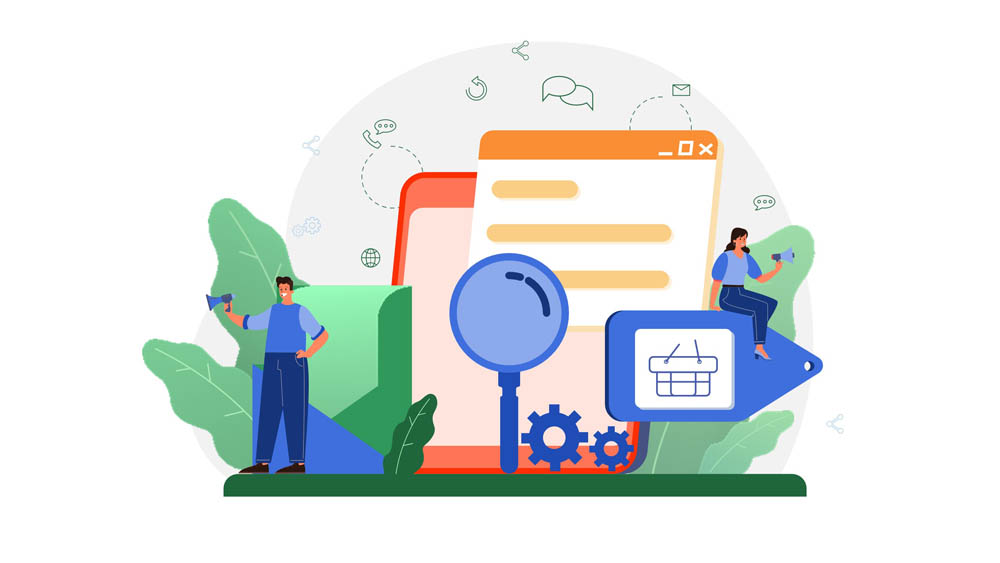In an earlier post, I discussed the rapid commoditization of content marketing that is occurring in the software industry. These days everyone has the infographic-style e-books, the animated explainer videos and the interactive ROI tools. Content marketing agencies have emerged to enable even the most handicapped, old-school marketing departments to create compelling content. If you are experiencing this same level of commoditization in your market, you may need to develop a strategy to differentiate your content. One way to differentiate with an increasingly level playing field is to share more of your intellectual property in the form of tools or content “apps.”

Three Differences from Traditional Content Marketing
- First the content is not locked down in final format such as PDF or MPEG4. These apps are designed to be edited and customized in formats. Think Microsoft Word/Google Docs; Excel/Sheets; PowerPoint/Slides; Visio; or EPS.
- Second, the apps are not focused on helping a buyer select a vendor, where most traditional content marketing plays. Instead the apps are focused on providing content about what to do after a purchase has been made. Think implementation, testing, training, upgrades and support..
- Third, these apps are not limited to generally available education about the value proposition or benefits of a particular piece of technology. Instead, the apps actually package up your intellectual property, real world experience and “know how.” Think project plans, implementation guides and test scripts.
By removing the limitations of traditional content marketing, you open up a near infinite number of possibilities for your campaigns.
Examples of IP-Based Content Marketing Apps
I have listed 15 examples below to catalyze your thinking:
1) Sample Process Swimlane Chart
Show a typical process swimlane both before and after implementing your new software. Prospects will need customize the diagrams to reflect their specific workflows, but you can jumpstart their efforts with generic process flows based upon a sampling of your customers. These swimlanes are best delivered in the format business process analysts prefer to use – Microsoft Visio.
2) Sample Implementation Project Plan
Outline the key steps, milestones and projected timelines for each phase of the implementation project. Every project’s timeline and milestones will vary, but by sharing a sample project plan you are enabling customers to get a sense for the time and effort. And it saves them the trouble of building their own project plan from scratch. These plans are best delivered in the format project managers prefer to use – Microsoft Project.
3) Sample Technical Architecture
Illustrate the server hardware, storage arrays, firewalls, WAN and LAN devices that the software will run on (or interact with). The specific topology will vary from customer to customer, but by sharing an architecture diagram you fast track the technical design of the solution. These architecture diagrams are best delivered in the format enterprise architects prefer to use – Microsoft Visio.
4) Sample Iconography
Create a portfolio of icons that includes the software applications, end-users and business processes relevant to your technology. Customers can use these to create their own technical architecture diagrams or presentation materials. There’s nothing better than when a competitor receives documentation from a prospect using your icons. Make the icons available in a variety of user-friendly formats such as PowerPoint and Visio as well as in customizable EPS/AI files for graphic designers.
5) Sample Job Description
With many new software applications, customers have to hire outside talent to act as end users, system administrators or developers. Help them accelerate their recruiting processes by developing sample job descriptions for these new roles. The Human Resources department or hiring manager will need to customize the job functions, required skills and evaluation criteria, but you can give them a head start. The sample job description should be downloadable in Microsoft Word or Google Docs.
6) Sample Budget Estimator
Nothing creates greater risk in the sales process than the ability of a sponsor to secure budget for the software purchase and implementation. Reduce your sales timeline and the probability of funding by providing customers with a sample budget worksheet. Include not just the costs for your software, but all the associated hardware, data center, hosting, implementation, testing, training and technical support expenses as well. The sample budget worksheet should be available in the finance team’s application of choice – Microsoft Excel.
7) Sample Business Case
Many software purchases will not be approved without a business case that shows Return on Investment within a short 18-month, 24-month or 36-month period. Go beyond the traditional ROI calculator to develop a business case template that models all the budgeted costs required as well as the projected savings. Have a finance professional develop the model in Microsoft Excel so that it will stand up to scrutiny when examined closely.
8) Sample Weekly Project Status Update
Provide an example of the information that should be shared with the project team on a weekly basis. The actual status update will vary based upon the preferences of the project manager, but by providing a sample with examples of the real issues typically encountered you can increase the customer’s odds of success. The sample project status update might be in slide format (Microsoft PowerPoint or Google Slides) or document format (Microsoft Word or Google Docs).
9) Sample Quarterly Executive Update
What does the executive steering committee need to know? Milestones and deliverables at risk? Budget estimates? Help your project team to avoid first-timer mistakes by sharing a generic executive update presentation based on your experience with other customers. The executive update is best delivered in Microsoft PowerPoint or Google Slides.
10) Sample Test Scripts
What functionality should your customers test before go-live? Help your accounts jump the learning curve by providing sample test scripts and plans. The critical features may vary from account to account, but are likely 80% similar. The sample test scripts are best delivered in Microsoft Word or Google Docs.
11) Sample Test Data
Most companies struggle to develop a real-world set of sample data to use for testing the application. As a result, they may miss critical functional problems before going live. Help your customers to avoid having to “re-invent the wheel” by offering sample test data to download. Use a generic format that can easily be uploaded into your application such as CSV or another flat file.
12) Sample User Acceptance Testing Plan
User Acceptance Testing (UAT) is often the last step before a software application goes live. By this point in the project lifecycle, most companies are running behind schedule and every minute counts. Help reduce your customers’ stress by giving them a sample UAT plan in Microsoft Word or Google Docs format.
13) Sample Training Curriculum
If your software application typically has a large user-base, a key part of the value realization will come from rapid adoption. You can greatly improve customer satisfaction ratings by ensuring that proper training occurs. (in Microsoft Word or Google Docs)
14) Sample Go-Live Checklist
What are the “last minute” issues that typically go wrong in your experience with other customer deployments? What are the things that companies forget to test, to communicate or to document before “go live.” By providing your customers with these details you increase the odds of success. When the customer is successful you are successful.
15) Sample KPIs
How will executives know if the project your software is enabling has actually been successful two to three years from now? What are the Key Performance Indicators that should be tracked related to cost reductions, sales growth, customer satisfaction or time-to-market? Help customers to understand these KPIs before they purchase your software. And provide industry benchmarks based upon real-world experience with other accounts. Sample KPIs can be provided in Microsoft Word. More sophisticated models might be graphical dashboards dynamically linked to data in the cells of a spreadsheet.









